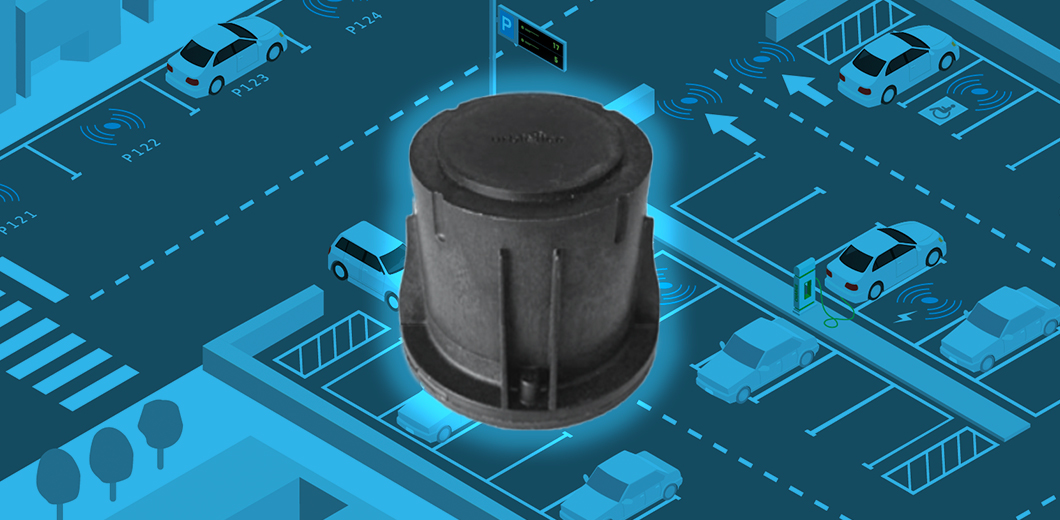When talking about vehicle detection in parking spaces, we come across different technological solutions. Magnetic sensors are the most common on the market, although there are also systems that combine more than one detection technology, such as infra-red and radar, designed on the premise of greater reliability. This gives rise to a debate as to whether it is more effective to have several technologies rather than one for greater accuracy.
Single detection
IoT sensors are designed to identify vehicle presence and this process goes beyond simply measuring physical parameters; they must be able to interpret complex data to make accurate “decisions” regarding parking space occupancy. For example, magnetic sensors detect variations in the magnetic field generated by the presence of metal objects, as would be the case with cars.
Magnetic sensors and other IoT devices must be able to measure these disturbances while identifying whether or not it is actually a vehicle to determine that the parking space is occupied. Furthermore, these devices have to adapt to weather conditions and possible interferences in the surroundings. If this is not taken into account in the technology design, temperature and humidity changes can affect sensor performance. The answer to this complex process lies in the use of advanced algorithms.
Multiple detection
Detection devices that use multiple technologies in their system, whether magnetic, infra-red or radar, stem from the idea of improving system reliability by overcoming the inherent limitations of each technology through the advantages of the others. Despite this, the combination of various detection methods has proven not to be as cost-effective as originally thought.
Contradictions in the results
One of the most common problems with multiple detection systems is conflicting readings. Let’s take the case of a system with infra-red and magnetic sensors: the built-in infra-red sensor might be dirty and incorrectly indicate that a parking space is occupied, while the magnetic sensor in the same device could show that it is not. In such cases, the question arises as to which sensor is right. These discrepancies can send erroneous data that affect device accuracy and undermine confidence in the detection system.
Calibration complications
Well-calibrated devices are essential for the devices to function properly. As each detection technology has its own requirements, combining them in a single device increases the complexity of the calibration process. A calibration error in one of the detection methods can affect the overall accuracy of the system and also influence the configuration of the other technology used, requiring further adjustments and maintenance.
Energy consumption and investment
Multi-detection sensors typically require higher power than single detection sensors. This can reduce the battery life of the device while increasing operational investment and maintenance costs. The initial investment also tends to be higher in these cases.
Case study: U-Spot Duo v. U-Spot M2M
A few years ago, Urbiotica added the U-Spot Duo device to our portfolio to offer a multi-detection option. This sensor combined both magnetic and infra-red detection for greater efficiency, although its performance did not prove to be as proficient as expected when compared to our U-Spot M2M sensor, which uses only magnetic detection.
The U-Spot M2M single detection device demonstrated 98% reliability in detecting vehicles in parking spaces, meeting and even exceeding the accuracy provided by the U-Spot Duo multiple detection system. This ensures fewer incidents and thus a better user experience.
Moreover, the simplified design of the U-Spot M2M magnetic detection sensor has resulted in lower power consumption compared with infra-red or radar sensors. This gives for extended device battery life while reducing the need for frequent maintenance or replacement, making these sensors a more cost-effective alternative for vehicle detection in the long term.
Disturbance mitigation
One of the arguments in favour of using multi-detection technologies is often their ability to mitigate external disturbances, which might be magnetic noise generated by power lines or railway tracks close to the parking space. However, technological advances in magnetic detection sensors in recent years have made it possible to develop algorithms capable of filtering out such interference without the need for multi-detection systems.

U-Spot: Single space IoT detection
Today, magnetic detection sensors are often equipped with complex algorithms capable of eliminating constant magnetic noise and adjusting readings taking into account the external disturbances. Other useful features include automatic calibration, easily adjusting the sensor in real time without manual intervention or interceding with other calibration systems.
Ultimately, in addressing the question of whether multiple detection systems are more or less reliable, it is important to note that they do not necessarily guarantee better results. In practice, magnetic sensors for vehicle detection in parking spaces have demonstrated 98% reliability on their own and are an accurate and simple solution that avoids the potential complications associated with multiple technologies, from inconsistent results to calibration setbacks.
However, what is crucial is not so much defining the detection methods and whether it has to have one, two or three. What is important is the system reliability and how to measure it. Therefore, projects should instead include clear requirements in their service level agreement (SLA) specifications that guarantee system reliability and stability. At Urbiotica, we are specialists in the development of IoT technologies such as detection sensors to improve mobility in cities. We offer pre-tested and reliable devices that provide optimum performance in parking space management.